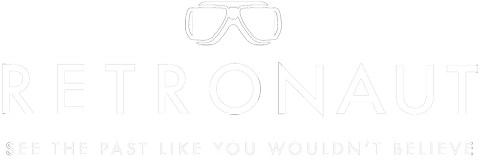Haunted by historical images in digital form. An online archivist has made a business from surprising old photographs.
- Emma Jacobs, Financial Times
For the Oxford-based Mr Wild it was his “lowly role” at the UK’s Museums, Libraries and Archives Council (later incorporated into the Arts Council) that convinced him of the need for archivists to find a wider audience. He became fascinated by making the equivalent of “hit records for historical photos”. Driving this was a childhood ambition to time travel.
In lieu of a time machine, he set up Retronaut, a website, as well as social media accounts. These promoted historical pictures that encouraged the audience to put themselves in the shoes of the photographs’ subjects. “I was saying ‘Look, if you want to go back in time, you can’t build a time machine but look at these pictures because they’ll have a similar effect.”
High resolution or colour pictures help this ambition. At first — in 2010 — his audience was just himself and his mother. A colour picture of Piccadilly Circus in central London dating back to 1949 was one of the first to go viral, thereby raising the site’s profile and building its audience. Over the past five years he has received money from seed investors, including Steve Pankhurst, the co-founder of Friends Reunited.
“I’ve been through times where things have looked very bleak for Retronaut and I’ve wondered if it’s going to survive”, he says. However, last year Mashable, the technology news site, announced a licensing deal with Retronaut. Mr Wild sees Nate Silver’s FiveThirtyEight.com statistics blog as a model — after it was licensed to the New York Times, it was bought by ESPN, the sports channel. Mashable’s arrangement with picture agencies means that Mr Wild has access to a wealth of material.
Mr Wild believes he knows what makes a photo a ‘hit’: its ability to surprise. He calls up a series of pictures of Edwardian women shopping, which evokes the modern street style blogger, The Sartorialist. “Historic pictures most engage us when they don’t fit with what we think the past should be . . . that’s what creates a viral hit.” Nostalgia is also potent. A popular series was shopping malls in the 1980s. One of the shoppers in the picture emailed Mr Wild in shock. “I thought I looked absolutely fantastic,” he wrote, “and I look terrible but what’s weird is now I also think I look great.”
Mr Wild says he sees very few deliberately falsified photos. “Usually the fake element is that the image has been mislabelled.” Wild has deployed his digital skills to promote archive centres and museums. He has guest curated exhibitions at archive centres and hosted collections’ photos on Retronaut.
Wolfgang Wild arrived at his vocation — as a digital curator of historical pictures — in a traditional way. He had worked for a number of years in museum and photographic archives. Curator used to be a rather rarefied tag, applied to specialists who preserved artefacts and organised collections. In the digital era it has become a catch-all term for anyone who aggregates and selects content. Anyone creating an iTunes playlist could be called a curator.
This democratisation suits Mr Wild, who insists cultural institutions should not be precious. “We are all casual curators when choosing and showing things to other people. It’s a gradient.”
But there is one woman Mr Wild credits as integral to Retronaut’s growth: Amanda Uren, “the best digital curator I’ve ever met”. Her training? Until 2013, she worked as a sales assistant at Tesco’s supermarket.

